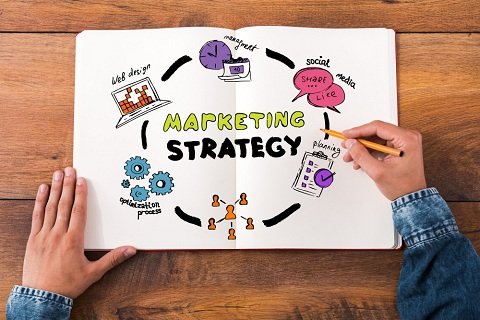Email marketing remains one of the most powerful tools in a marketer’s arsenal, offering a direct and personalized way to engage with customers, nurture leads, and drive conversions. However, in an era of overflowing inboxes and fierce competition for attention, creating an effective email marketing strategy requires careful planning, strategic execution, and a deep understanding of your audience’s needs and preferences. In this article, we’ll outline a comprehensive guide to creating an effective email marketing strategy that delivers results and drives business growth.
1. Define Your Goals
Before diving into the intricacies of email marketing, it’s essential to clearly define your goals and objectives. What do you hope to achieve through your email campaigns? Whether it’s increasing sales, driving website traffic, generating leads, or enhancing brand awareness, having specific, measurable goals will guide your strategy and help you track success over time.
2. Understand Your Audience
Effective email marketing begins with a deep understanding of your target audience. Take the time to segment your email list based on demographics, preferences, purchase history, and engagement levels. By delivering relevant and personalized content to each segment, you can increase engagement and drive conversions. Utilize customer data and analytics tools to gain insights into your audience’s behavior and preferences, and tailor your messaging accordingly.
3. Build a Quality Email List
A quality email list is the foundation of any successful email marketing strategy. Focus on growing your list organically by capturing email addresses through website sign-up forms, social media channels, and events. Avoid purchasing email lists, as this can lead to low engagement rates and damage your sender reputation. Prioritize building a list of engaged subscribers who have opted in to receive your emails, and regularly clean and update your list to remove inactive or invalid email addresses.
4. Craft Compelling Content
The success of your email marketing campaigns hinges on the quality of your content. Create compelling, relevant, and valuable content that resonates with your audience and addresses their needs and pain points. Whether it’s informative blog posts, promotional offers, product updates, or curated content, focus on delivering content that provides value and drives action. Experiment with different content formats, such as videos, infographics, and interactive elements, to keep your emails fresh and engaging.
5. Design Engaging Templates
The design and layout of your emails play a crucial role in capturing your audience’s attention and driving engagement. Use eye-catching visuals, clear calls-to-action (CTAs), and mobile-responsive designs to create visually appealing and easy-to-navigate emails. Pay attention to your email’s subject line and preview text, as these are the first things recipients see and can influence open rates. Test different subject lines, preview text, and email designs to optimize performance and maximize results.
6. Optimize for Deliverability
Ensuring your emails reach recipients’ inboxes is essential for the success of your email marketing efforts. Focus on optimizing deliverability by adhering to best practices for email authentication, sender reputation management, and compliance with anti-spam laws. Use a reputable email service provider (ESP) that offers robust deliverability features, such as authentication protocols, spam filtering, and inbox placement optimization. Monitor your email deliverability metrics, such as bounce rates and spam complaints, and take corrective action as needed to maintain a positive sender reputation.
7. Test and Iterate
Continuous testing and optimization are key to refining your email marketing strategy and driving improved results over time. Experiment with different variables, such as subject lines, send times, content formats, and CTAs, to identify what resonates most with your audience. A/B testing, also known as split testing, allows you to compare the performance of different email variations and determine which elements drive the highest engagement and conversions. Use data and analytics to track key performance metrics, such as open rates, click-through rates, and conversion rates, and use these insights to inform future campaign decisions.
8. Monitor and Measure Results
Effective email marketing requires ongoing monitoring and measurement to gauge the success of your campaigns and identify areas for improvement. Track key performance metrics and KPIs, such as open rates, click-through rates, conversion rates, and ROI, to evaluate the effectiveness of your campaigns. Use email analytics tools and reports provided by your ESP to gain insights into subscriber behavior and campaign performance. Regularly review and analyze your data to identify trends, patterns, and areas for optimization, and use these insights to refine your email marketing strategy moving forward.
Conclusion
Creating an effective email marketing strategy requires careful planning, strategic execution, and ongoing optimization. By defining clear goals, understanding your audience, building a quality email list, crafting compelling content, designing engaging templates, optimizing for deliverability, testing and iterating, and monitoring and measuring results, you can create email campaigns that resonate with your audience, drive engagement, and deliver measurable results. Remember that email marketing is a dynamic and evolving discipline, so stay agile and adaptive, and continually refine your strategy to stay ahead of the curve and drive business growth.










